The RCA 85-X delivers lower than typical gains suitable for anything from mic input to bridging use. Easily used as a line amp, or a line booster amp, or a preamp with loud sources or high output mics, or make-up gain with a passive EQ, stick it on the output of your console, etc. These are a rare example of a vintage tube amp capable of unity gain. I have a pair myself on a rack of misc. RCA preamps, documented elsewhere on this site.
These amps date to 1939, are full range and noise free, and are fairly rare. I've not seen a serial # over 50 yet, though they are in the catalog, I'd guess not much more than 100-200 manufactured. They would have only been used in very large installations, the average sized local radio station would have used an all in one console and not needed such an amp.
Very similar to the 85-B preamp, which is the same as the 76 series console preamp as used on the early Elvis hits. If you want, it's an easy conversion.
Transformers and tubes (6J7) tested/good. These have not been fired up, cap replacements may be necessary, and input/output center taps should be disconnected for most modern use. My pair did not need any service other than a cleaning.
150/600/5K/20K input Z.
600/150 output Z.
+19VU max 20K input level (really high input headroom).
+19VU output level rating, less than 1% THD between 50-10K.
20K bridging gain range of -3.5 to +4 dB.
600 ohm gain range of 12 to 20.5 dB.
150 ohm gain range of 17 to 25 dB.
150 ohm input with the NFB totally removed gives about 45 dB gain.
Rewire as an 85-B preamp gives about 30 dB gain with 150 ohm input .
Rewire further with something like a 6SN7 to copy the BA-2 circuit for roughly 50 dB gain.
Rated +/- 0.5 dB 30-10K. My measurements for 600 ohm input show -0.5 dB points of roughly 20 and 21K, excellent for pre-war audio.
Octal 6J7 or 1620 tube.
Filament voltage requirement of 6.3V AC or DC at 0.3A.
Plate voltage requirement of 180-250V, 3.8 mA @ 240V.
12.5" x 2.5" x 6" dimensions.
More than one pair available.
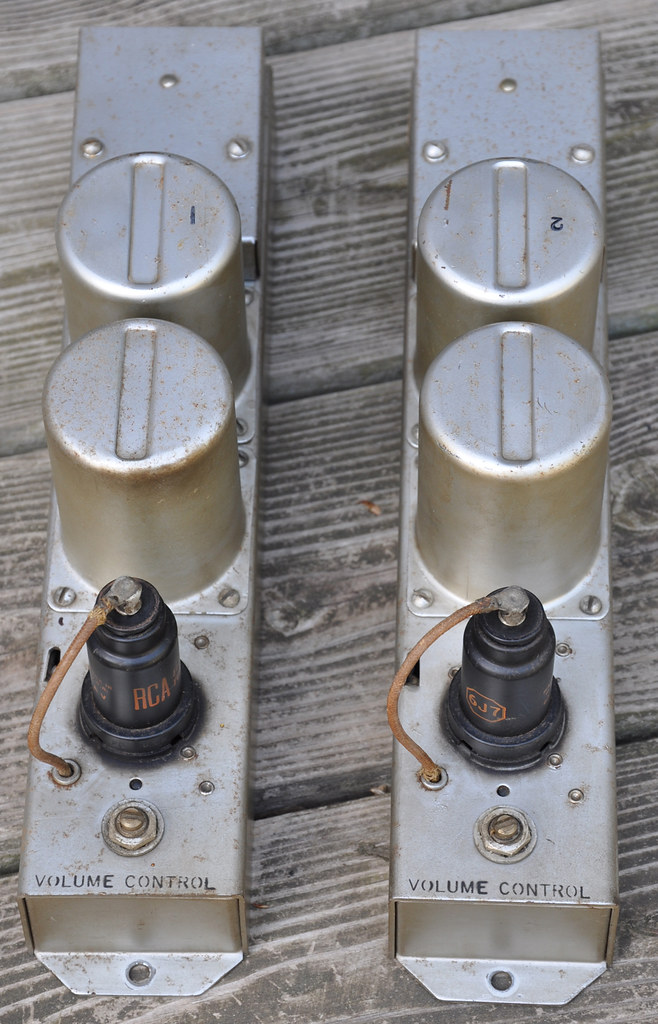
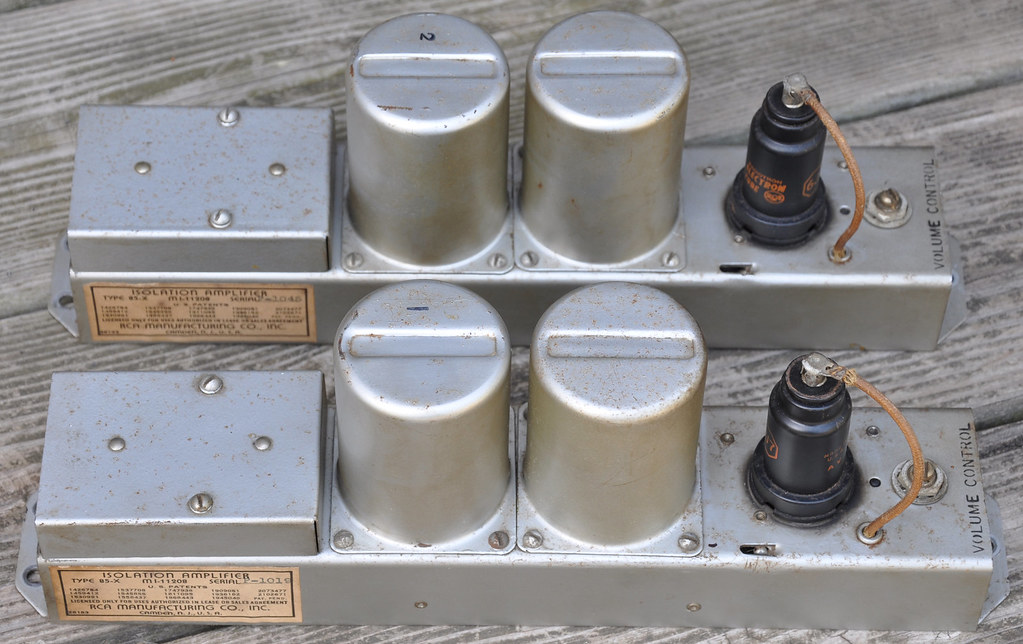
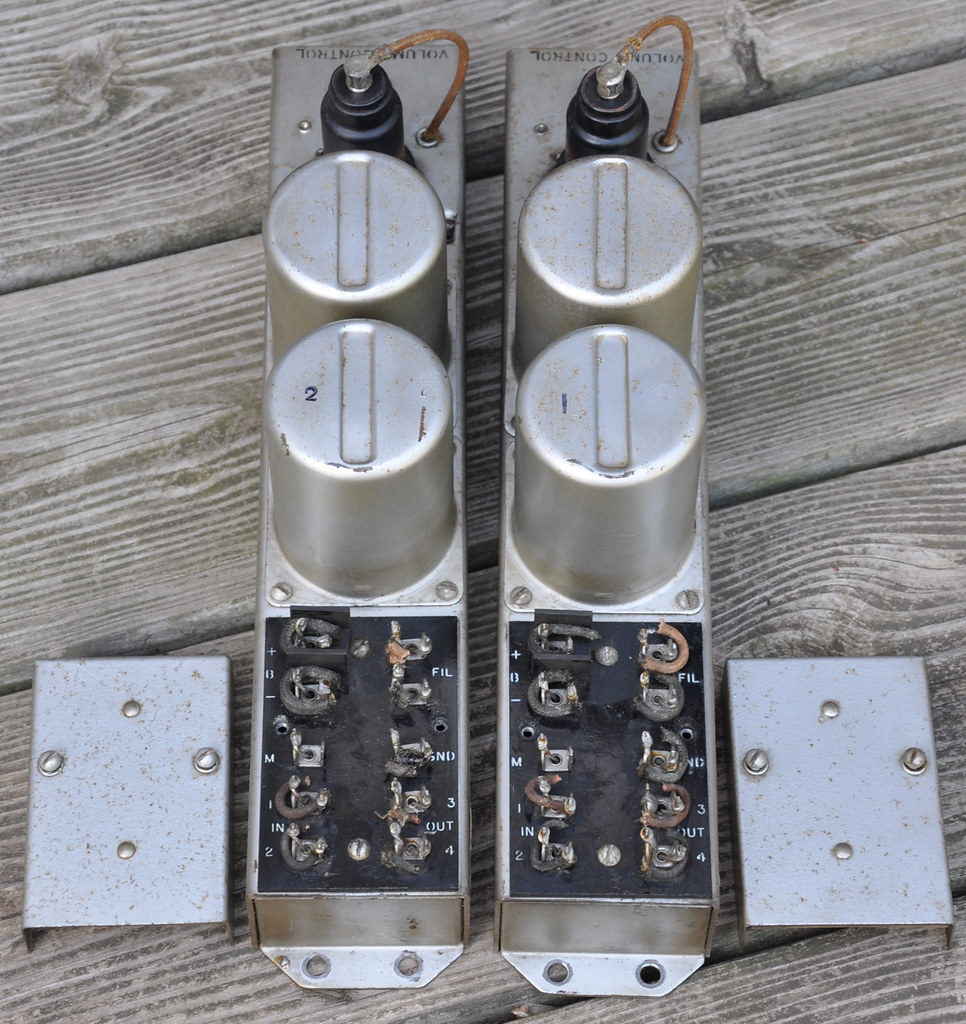
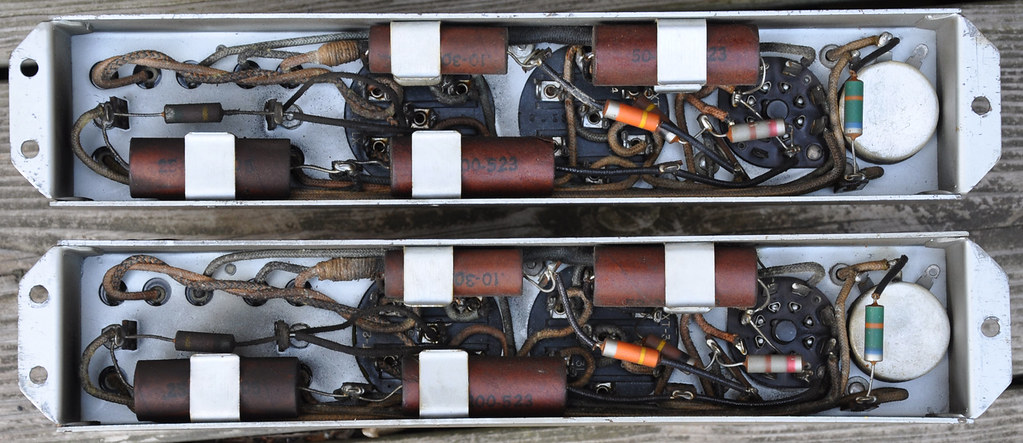
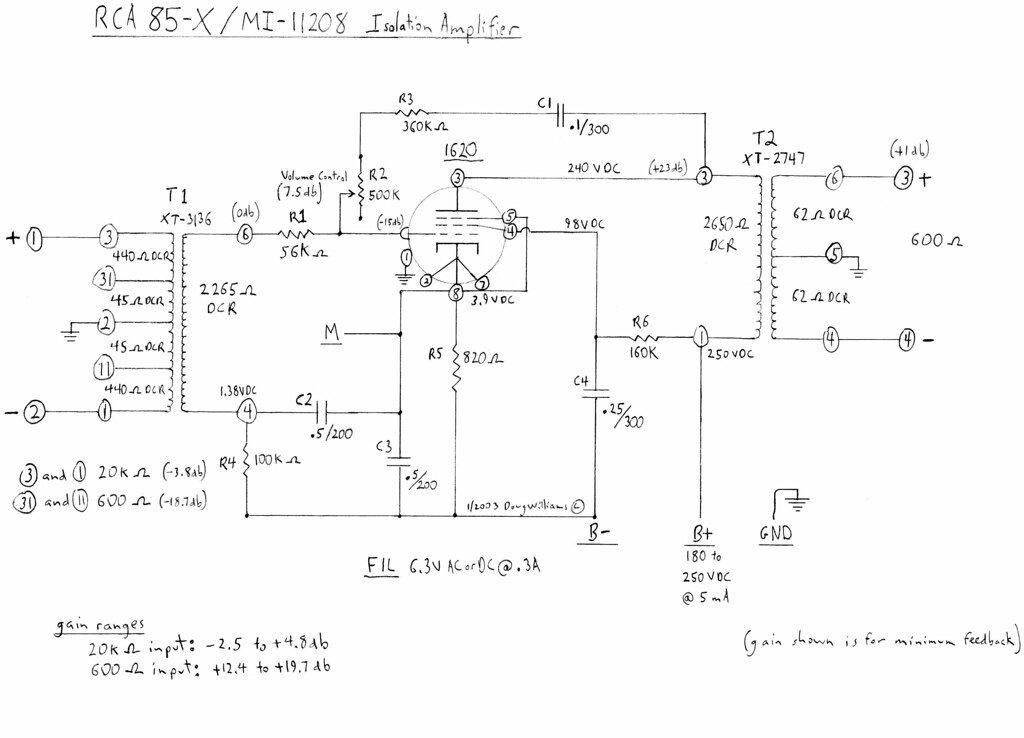
These amps date to 1939, are full range and noise free, and are fairly rare. I've not seen a serial # over 50 yet, though they are in the catalog, I'd guess not much more than 100-200 manufactured. They would have only been used in very large installations, the average sized local radio station would have used an all in one console and not needed such an amp.
Very similar to the 85-B preamp, which is the same as the 76 series console preamp as used on the early Elvis hits. If you want, it's an easy conversion.
Transformers and tubes (6J7) tested/good. These have not been fired up, cap replacements may be necessary, and input/output center taps should be disconnected for most modern use. My pair did not need any service other than a cleaning.
150/600/5K/20K input Z.
600/150 output Z.
+19VU max 20K input level (really high input headroom).
+19VU output level rating, less than 1% THD between 50-10K.
20K bridging gain range of -3.5 to +4 dB.
600 ohm gain range of 12 to 20.5 dB.
150 ohm gain range of 17 to 25 dB.
150 ohm input with the NFB totally removed gives about 45 dB gain.
Rewire as an 85-B preamp gives about 30 dB gain with 150 ohm input .
Rewire further with something like a 6SN7 to copy the BA-2 circuit for roughly 50 dB gain.
Rated +/- 0.5 dB 30-10K. My measurements for 600 ohm input show -0.5 dB points of roughly 20 and 21K, excellent for pre-war audio.
Octal 6J7 or 1620 tube.
Filament voltage requirement of 6.3V AC or DC at 0.3A.
Plate voltage requirement of 180-250V, 3.8 mA @ 240V.
12.5" x 2.5" x 6" dimensions.
More than one pair available.







